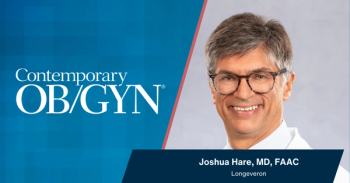Despite their efficacy, Medical University of South Carolina (MUSC) Hollings Cancer Center researchers have found that federally qualified health centers (FQHCs) remain underutilized toward reducing gaps in cervical cancer screening (CCS), publishing their findings in JAMA Network Open.1
The data indicated only 55% of woman visiting FQHCs were up to date (UTD) on their CCS. However, increasing screening rates to the Healthy People 2030 (HP2030) goal of 79% could allow care to reach an addition 1.87 million women, which can lead to identification or prevention of thousands of cancers.1
Key takeaways:
- Only 55% of women visiting federally qualified health centers (FQHCs) are up to date on cervical cancer screening (CCS).
- Meeting the Healthy People 2030 goal of 79% screening could reach an additional 1.87 million women.
- Screening improvements in FQHCs would most benefit uninsured, low-income, rural, and minority populations.
- Regional increases in up-to-date CCS rates could range from 1.8% to 2.8% if national targets are achieved.
- Findings underscore the role of FQHCs in reducing cervical cancer disparities and potentially lowering anal cancer risk linked to HPV.
“FQHCs are the backbone of the nation’s safety net health system,” said Trisha Amboree, PhD, assistant professor at MUSC. “Screening and prevention in those settings not only saves lives but also saves money, preserves quality of life, and supports people’s ability to contribute to their families and communities.”1
Assessing FQHC patients
The study was conducted to evaluate the number of underscreened patients in FQHCs.2 Data was obtained from the Health Resources and Service Administration Uniform Data System and included 1352 FQHCs, which were compared to a general US population recorded in the National Health Interview Survey 2021.
CCS prevalence was based on US Preventive Services Task Force guidelines, with CCS eligibility determined by the presence of a cervix in patients aged 21 to 64 years. CCS was considered UTD by receiving cytologic screening in the last 3 years if aged 21 to 64 years or high-risk HPV testing within the last 5 years if aged 30 to 64 years.2
Data was stratified by demographic subgroup and geographic region. Patients with prior hysterectomy were excluded from the analysis.2
Cervical cancer screening in FQHCs
There were 7,757,211 CCS-eligible patients representing a population of 85,364,685 individuals included in the analysis. Of uninsured participants, 18.8% were served by FQHCs, vs 14.5% of rural participants, 17% of those living at or below 200% of the poverty level, 12.7% from racial or ethnic minority groups, and 24.9% of those publicly insured.2
FQHC services was reported in:
- 15.7% of underscreened patients overall
- 19.5% uninsured
- 35.9% publicly insured
- 17.7% from racial or ethnic minority groups
- 22.4% at or below 200% of the federal poverty level
- 26.3% with rural residence
In the Northeast, 16.5% of underscreen patients were served by FQHCs, vs 14.1% in the Midwest, 13.5% in the South, and 19.1% in the West. UTD CSS was reported in 55.1% of patients served by FQHCs vs 74% of the general US population.2
Screening gaps
The analysis indicated a 2.2% increase in the national UTD CSS by improving CCS in FQHCs to 79.2% by 2030, indicating an additional 1.87 million people screened. In uninsured, publicly insured, at or below 200% of the poverty level, from racial and ethnic minority groups, and rural residing patients, these increases would be an estimated 4.5%, 6%, 4.1%, 3.1%, and 4.4%, respectively.2
Investigators also estimated an increase of UTD CCS by 2% in the Northeast by meeting the HP2030 goal, vs 1.8% in the Midwest, 2.1% in the South, and 2.8% in the West. Overall, the data highlighted potential for a significant increase in UTD CCS by implementing strategies in FQHCs.2
“Investing in these clinics and making screening more accessible there can protect those who need it most,” said Amboree.1
Links between cervical and anal cancer
Alongside reducing cervical cancer screening, CCS may be able to reduce associated anal cancer risks, which were discussed by Haluk Damgacioglu, PhD, in an interview with Contemporary OB/GYN.3 According to Damgacioglu, the greatest anal cancer risks occur in women aged 65 to 74 years with a prior cervical cancer diagnosis 10 to 15 years earlier.
Damgacioglu noted these findings could have implications for future screening policies. Further investigation may guide anal cancer screening, as additional data is needed to establish a causal link between prior cervical cancer and anal cancer diagnosis.3
“The main speculation is that both cancers are [human papillomavirus (HPV)] associated,” said Damgacioglu. “And we know that the coinfection with cervical HPV and anal HPV is common among women. So, the causal impact of HPV can be the main reason that we are observing higher incidence among these women.”3











